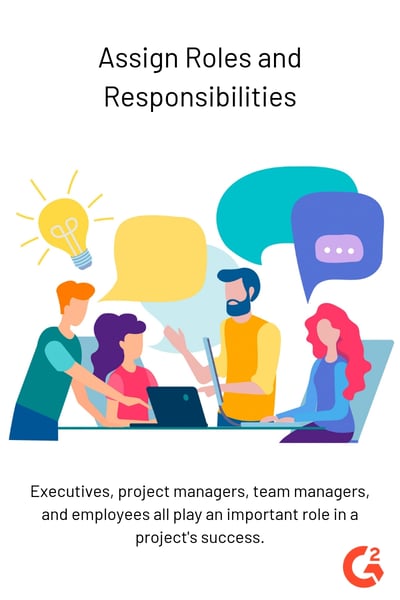
“Someday my prince will come,” was a big phrase throughout my Disney-filled childhood.
And while I’m optimistic I could still have a Meghan Markle-like romance, I don’t foresee any princes in my future. So myself, along with many other project management professionals, will have to settle for the PRINCE2 method.
PRINCE2 is a popular project management methodology. It’s an acronym that stands for projects in controlled environments. Bit of a stretch, but we got there.
PRINCE2 is a project management methodology that is centered around structured processes and organization. Although it's most popular in the UK, the PRINCE2 method and its seven processes, principles and themes can be utilized for a project of any scope or objective.
While PRINCE2 is commonly deployed by companies within the UK, it’s an excellent methodology for any business hoping to have a detailed and defined organization structure within their project management team.
Read on to learn more about this methodology and how it can improve your project management strategy.
PRINCE2 is made up of seven themes, principles and processes that guide its users through the management of a project. One accolade of the PRINCE2 method is that it’s a reasonable solution for a project of any scope or genre.
The image below has labeled the seven themes that make up the PRINCE2 process.
Let’s dive into the specifics of these seven principles first, followed by themes and processes.
The following are the seven principles of the PRINCE2 method.
In order for a project to either be approved or continue on, there needs to be a clear, professional justification for this project’s execution. Managers and stakeholders should constantly evaluate and understand a project’s value to the company at that particular time.
Project management is all about recording information for our future selves, and the PRINCE2 method is no different. In this method, managers keep a “lessons log” that helps them understand their successes and/or failures for the purpose of learning from them.
Part of the PRINCE2 methodology is clearly labeling who does what, when, and how. This method does not leave room for ambiguity regarding responsibilities.

Instead of trying to accomplish everything at once, the PRINCE2 methodology requires project managers to split the project up into smaller groupings of tasks.
This principle essentially says “if it ain’t broke, don’t fix it.” Project managers are only to seek help from higher-ups if there’s a problem. If things are otherwise running smoothly, there’s no need to contact stakeholders.
Make sure everyone is on the same page in regards to the project’s goals and deliverables. Everyone should have their sights set on the same end result.
Make sure to customize the PRINCE2 strategy to cater to the particular project’s needs such as scope and cost.
The following are the seven themes of the PRINCE2 method. These themes are determined prior to a project’s start.
A business case helps justify a project and prove to stakeholders that the endeavor is worthwhile.
Again, this theme emphasizes the importance of having all the tasks within a project doled out ahead of time. Project managers should have a clear understanding of who is going to accomplish what tasks.
Define what standards you’re going to judge your work on, and stick to those standards.
A project plan defines the specifics. What’s your timeline, budget, constraints? How are you going to take your team from the starting line to the finish line?
Before beginning any project, it’s important to understand all that could possibly go wrong. Take this time to determine risks, as well as determine how you would hypothetically overcome them. Additionally, consider what your risk management plan will be.
Project managers have to constantly handle feedback regarding the project, as well as their strategies. This part of the PRINCE2 method encourages managers to be agile and open to improvements.
Project managers should always be aware of whether they are meeting their deadlines and hitting their project milestones as intended. Recording and assessing progress throughout a project will increase the chances of closing the project on time.
Lastly, let’s discuss the processes associated with PRINCE2. This is how a project’s actual execution is structured.
Also referred to as SU, the project start-up is the period of time in which managers create the project mandate. This is similar to a project charter, and outlines the details about how the project will be executed and why it’s important.

Project charter template courtesy of Template Archive
After the mandate is created, a project brief can be drafted. The brief is then handed to those responsible for carrying the project out, who can then start their initial steps.
Also referred to as IP, this is the stage in which a project manager will clarify how varying project elements will be managed. Those elements are: project schedule, budget, product quality, scope or reach, benefits, and risk.
Also known as DP, this is the stage that stakeholders or executives oversee. They are in charge of a project’s initiation, ensuring the team remains within its confines, providing counsel when necessary, and closing the project at the end.
Instead of doing things all at once, the PRINCE2 method breaks work down into work packages so steps can be completed in stages. The project manager is in charge of monitoring progress on work packages and providing support when needed.
Managers of individual teams are responsible for overseeing day-to-day progress, and providing their team with support when needed.
Also known as MP, this is the stage of accepting, executing, and delivering on a work package. The project managers and team managers communicate the progress of the aforementioned steps.
Also known as SB, this stage is where project managers reflect with the board on progress thus far to determine whether the project should continue.
The project manager also updates the lessons log in this stage in order to help them plan for the future, update any related documents, and report the stage’s completion.
Also known as CP, this is the final step in a project abiding by the PRINCE2 method. During this step, project managers complete the project, write up reviews based on lessons learned, and turn in the project’s final result to the client or whichever manager called for it.
After this step, a project is considered completed and managers can decide how to disperse remaining resources.
As you can see, there’s a lot that goes into the PRINCE2 method! So much so that certifications have cropped up for project managers to become further trained in this management style.
If the basics of this method have appealed to you, consider further pursuing a certification in PRINCE2 to really drive home the success of your upcoming projects.
Wondering if a project is even possible? Try a feasibility study and save yourself the trouble of finding out the hard way!
Grace Pinegar is a lifelong storyteller with an extensive background in various forms such as acting, journalism, improv, research, and content marketing. She was raised in Texas, educated in Missouri, worked in Chicago, and is now a proud New Yorker. (she/her/hers)
A portfolio is a collection of your best work, put forth in the hopes of making a positive...
 by Grace Pinegar
by Grace Pinegar
Virtual project management? What is this, Ready Player One?
 by Grace Pinegar
by Grace Pinegar
A portfolio is a collection of your best work, put forth in the hopes of making a positive...
 by Grace Pinegar
by Grace Pinegar
